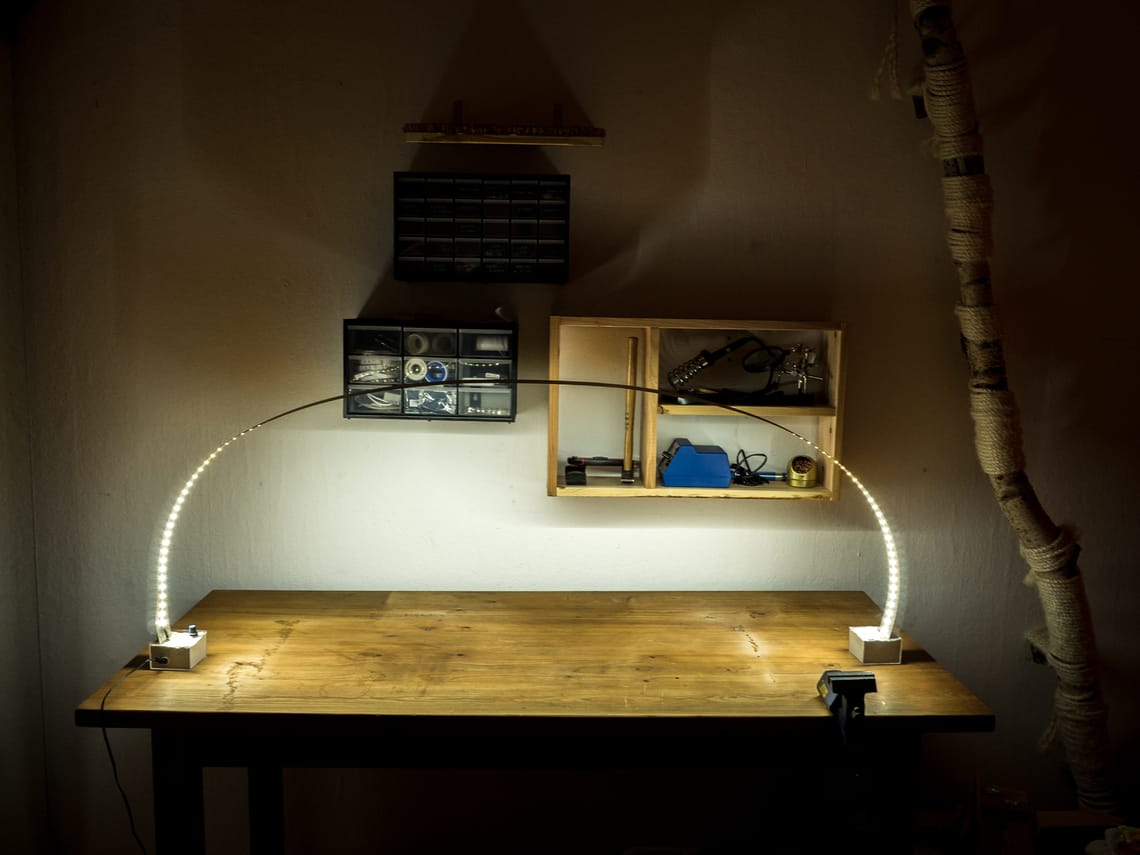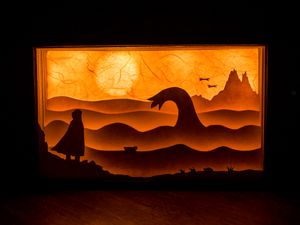
Work light
This work light was a really nice addition to my home and I use it a lot. Whenever I really need to see what I'm doing like when drawing, fiddling with little things or just in general working with my hands during nighttime I get the light and it is a great help. It gives a nice all around illumination and is flexible enough to put it almost anywhere. I also use it from time to time as a light source when photographing objects although that's not the main use for me.
There was not much creativity involved in this one. Basically I followed a YouTube tutorial to make this lamp. It was quite a simple process really and I can not recommend the channel highly enough as a source of very nice ideas and projects:
Some things to consider when doing this project:
- I added a dimmer to the lamp like showed in the tutorial however when I tried to dim the LEDs they actually started flickering. You can probably avoid this by using high quality LED strips and not being cheap like me. So now I use the light always at full intensity but it doesn't bother me. When I use the light I use it because I need - well - light and I don't really miss the dimmer. So I guess you might also forgo the dimmer depending on what you're gonna use the light for and how bright your LEDs are. Makes the project a bit simpler. If you're gonna use a dimmer make sure to test beforehand with your LEDs because once it's cemented in there is no changing it.
- When moving the light around the bases sometimes flip over due to the rigidity of the aluminum strip. I got some dents in my lamp because of that. To avoid that be careful when handling it, preferably always grabbing both bases when moving it around. Another possibility would be to use something even heavier than cement as the base (iron/steel?) or to possibly attach them to the table.
- According to some comments on the YouTube video, aluminum and cement is not a good combination and it might make the aluminum corrode over time. I don't know much about chemistry but to be on the safe side I coated the ends of the aluminum strip in epoxy before cementing them into the bases.
- I didn't really consider changing the LED strip in case of failure. I guess I can still do it but planning ahead for making it easy to exchange the LEDs without having to cut and re-solder wires would be wise.
There are several ways this light could be changed to improve or adjust it for different purposes. I'll add some ideas here. If I'd do this project again I might think about incorporating some of them:
- Play with shape and size depending on use case.
- Like mentioned above, use heavier base.
- Alternatively it might be possible to somehow add clamps instead of a base so the light could be attached anywhere, also overhead.
- When the light directly enters the eye it can be distracting due to the point-light nature of the LEDs. It might be worthwhile to add some diffusion to make the light more pleasant to use.
